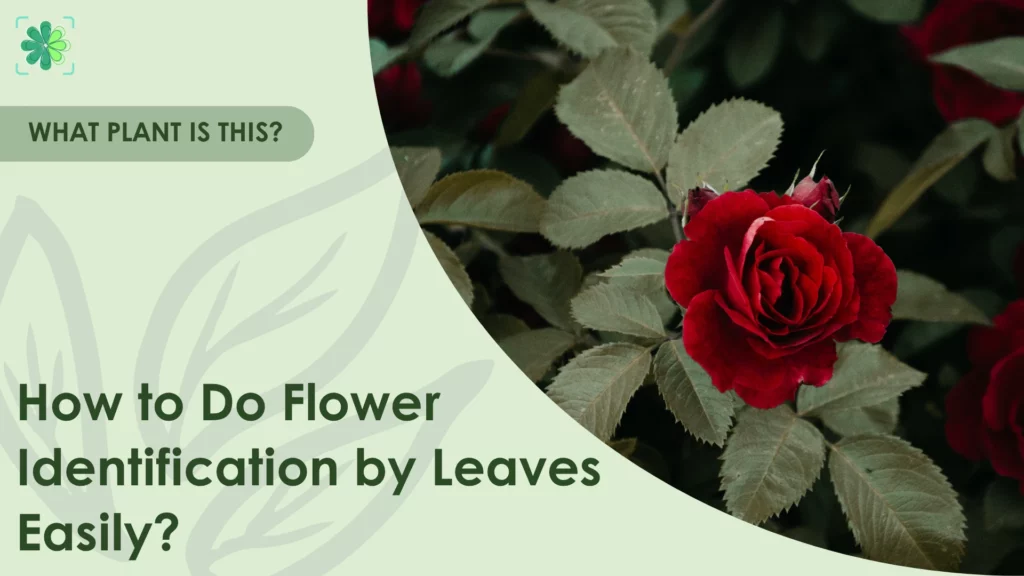
When flowers aren’t in bloom, leaves become your best clue. Flower identification by leaves helps gardeners, hikers, and plant lovers figure out what they’re looking at year-round. In this article, I will show you what to observe and how to spot common leaf traits that point to a plant’s identity.
Why Identify Flowers by Leaves, Not Just Blooms?
Leaves often stick around for up to 10 months each year, while most flowers last only 1–4 weeks in the wild or 7–14 days once cut. That makes flower identification by leaves more reliable, especially when plants aren’t blooming.
Research shows that botanists cataloged traits from over 510 leaves across 780 species to build identification systems based on leaf shape, edge, vein patterns, and surface texture. Those traits stay visible outside bloom season, making it possible to identify perennials and wildflowers almost any time.
In addition to curiosity and gardening needs, leaf-based identification can help you spot potential toxins or edibles before touching or tasting them.
What Leaf Clues Help You Identify Flowers?
Leaf Shape and Type
Leaf shape is one of the most visually obvious and botanically meaningful features. Some of the most common shapes include:
- Oval or elliptical (as seen in camellias)
- Lanceolate or lance-shaped (common in many grasses and irises)
- Cordate or heart-shaped (like morning glory or redbud)
- Linear or needle-like (typical of conifers and lilies)
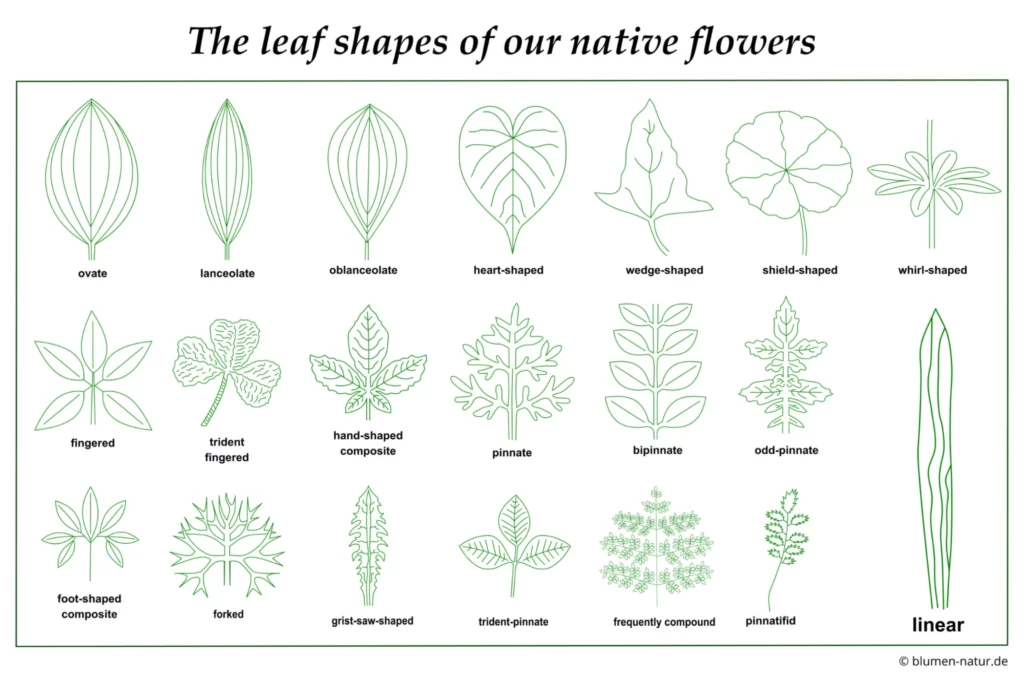
In addition to shape, you need to observe leaf type:
- Simple leaves have one undivided blade (e.g., magnolia, tulip)
- Compound leaves are split into distinct leaflets, as in roses, clovers, or black walnut trees
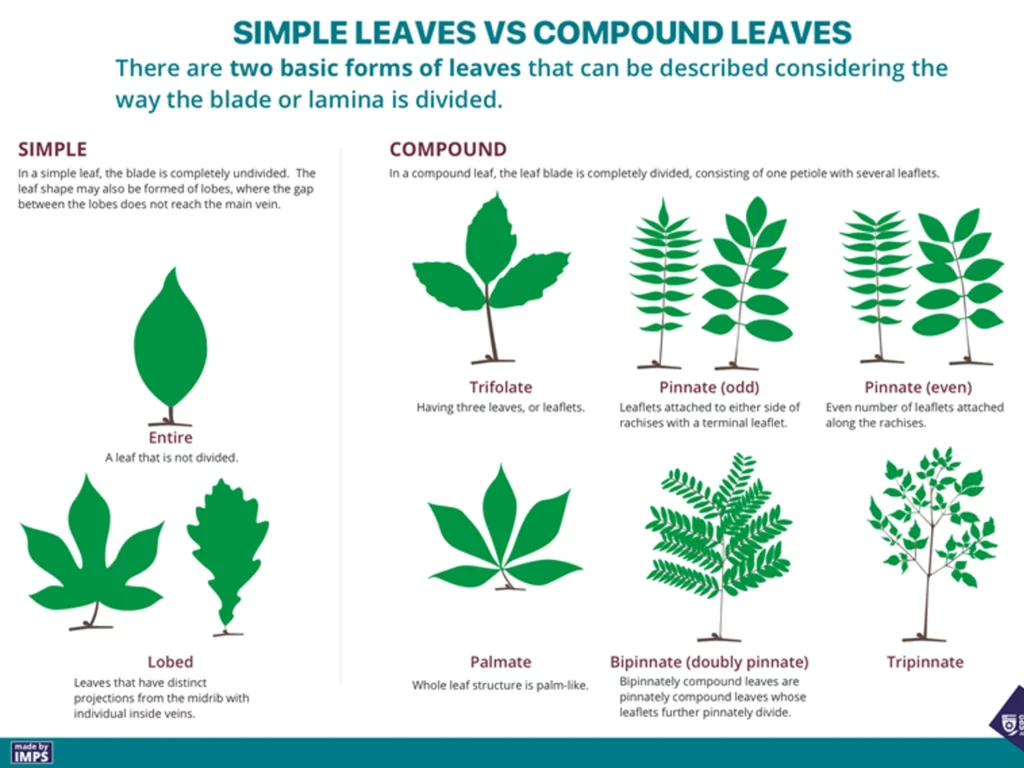
These distinctions matter. For example, many flowering trees in the legume family (Fabaceae) have compound leaves with opposite leaflets, while monocots like lilies have long, strap-like simple leaves. Learning plant identification by leaf shape not only narrows your options but can help you spot plant families even without blooms.
Leaf Margin (Edge)
The leaf’s edge is a key diagnostic trait. Botanists classify margins into several types, such as:
- Entire (smooth edge), seen in tulips and laurel
- Dentate (large outward teeth), found in some flowering herbs
- Serrate (fine saw-like teeth), common in roses and cherry blossoms
- Crenate (scalloped curves), seen in catmint and nasturtium
- Lobed (rounded divisions), typical in poppies and marigolds
- Parted (deep cuts near the midrib), found in wildflowers like cleome
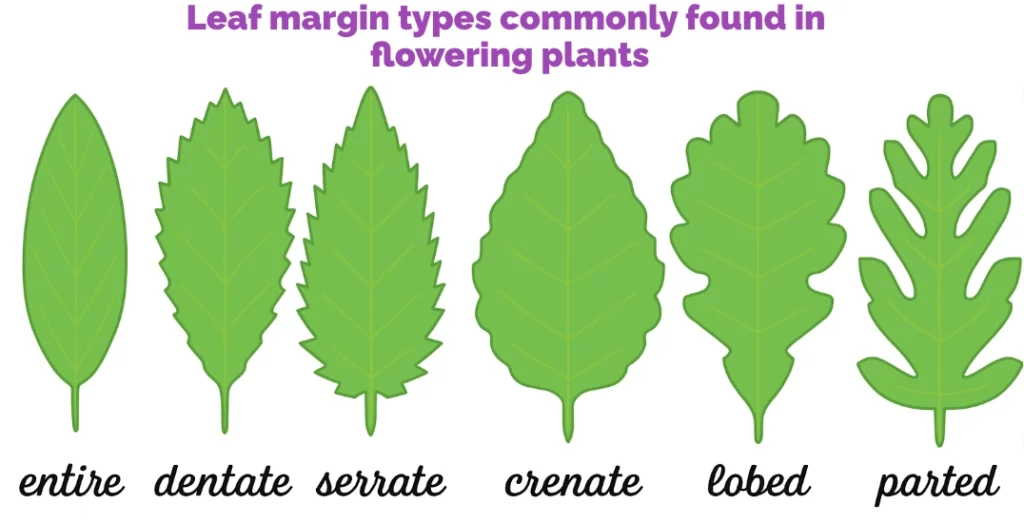
Margins often remain consistent, even if the shape varies slightly due to environmental factors or age. This makes them especially helpful in flower ID by leaf margin, as some species differ only in this one trait. For instance, purple coneflower and black-eyed Susan have similar overall leaf shapes, but their margins differ in texture and depth.
Leaf Arrangement and Position
Another reliable clue is how leaves grow along the stem. The three most common arrangements are:
- Alternate: one leaf per node, alternating sides (e.g., sunflower, goldenrod)
- Opposite: two leaves emerge from the same node, directly across from each other (e.g,. dogwood, honeysuckle)
- Whorled: three or more leaves encircle the stem at the same point (e.g., sweet woodruff, cleome)
Also note basal rosettes, where leaves cluster in a circular pattern at the base of the plant, like in dandelions or plantain.
Leaf arrangement is instrumental in flower identification by leaves because it helps eliminate entire groups of plants. For example, most plants in the mint family (Lamiaceae) have opposite leaves, while those in the aster family (Asteraceae) usually show alternate leaves. If you match the arrangement correctly, you’re already halfway to a confident ID.
Leaf Surface and Veins
The surface and internal pattern of a leaf carries surprisingly precise clues. Let’s look at two aspects:
a. Surface Texture
Some leaves are:
- Hairy or fuzzy, like lamb’s ear or mullein, helping retain moisture
- Glossy or waxy, like gardenia or citrus, protecting against evaporation
- Dull or leathery, often seen in evergreens like rhododendrons
Surface clues can suggest a plant’s native habitat or drought tolerance, and narrow your options in field ID.
b. Venation (Vein Patterns)
There are three primary patterns:
- Parallel: veins run side by side from base to tip (typical of grasses, lilies)
- Pinnate: one central vein with smaller veins branching off like a feather (e.g., rose, cherry)
- Palmate: several prominent veins spread out from a single point (e.g,. maple, geranium)
Understanding botanical leaf patterns helps when identifying closely related species or families that share similar shapes but differ in vein structure.
Common Leaf Types of Popular Flowering Plants
One of the easiest ways to begin flower identification by leaves is to look at well-known flowers you may already recognize. Below are a few common examples, along with what their leaves reveal.
- Roses (Rosaceae family)
Rose plants have compound leaves: each leaf is divided into smaller leaflets, typically arranged in odd numbers like five or seven. The leaf margins are sharply toothed, and the arrangement is alternate along the stem. These traits are consistent across most rose varieties, making them a solid example for learning how to identify flowers by leaves.
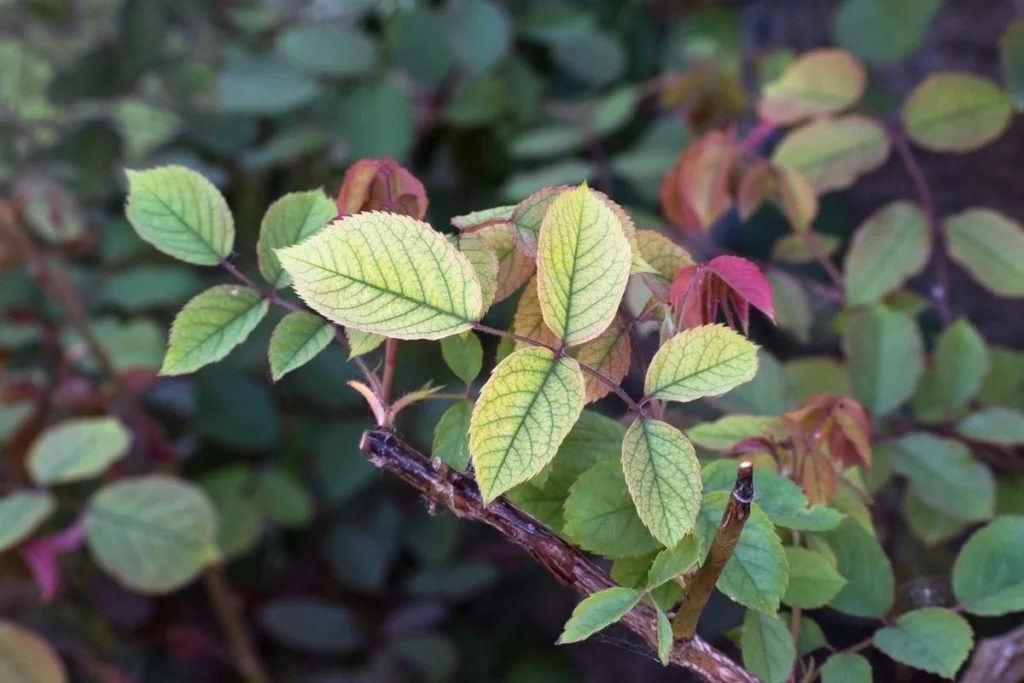
- Lilies (Liliaceae family)
Lilies are monocots, so their leaves are simple, smooth, and strap-shaped with parallel veins that run from base to tip. Unlike broad-leaved flowering plants, lily leaves don’t branch out in complex patterns.
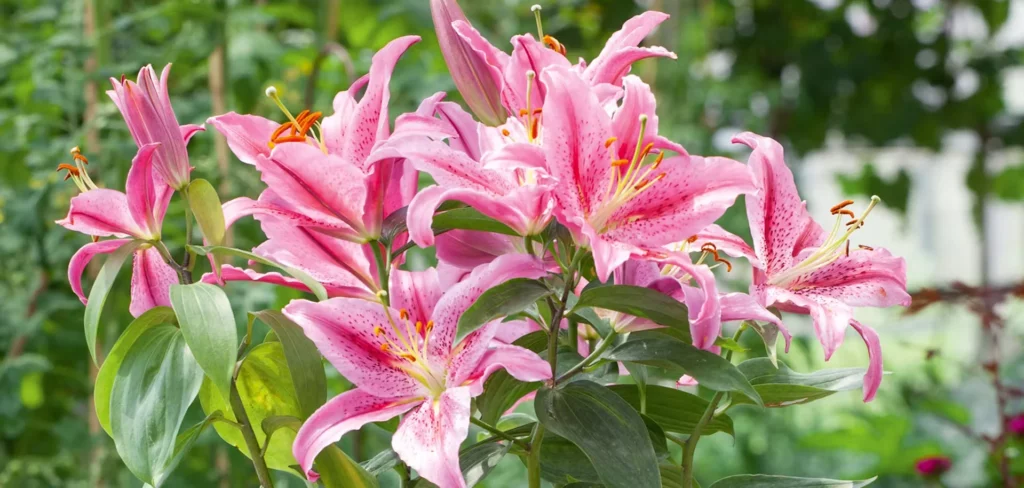
- Daisies (Asteraceae family)
Daisies have lobed leaves with branching (pinnate) veins and often a slightly hairy surface. Leaf shapes can vary among species, but the vein pattern and lobed margins are fairly consistent. These traits help distinguish daisies from other lookalike plants with simple, round petals.
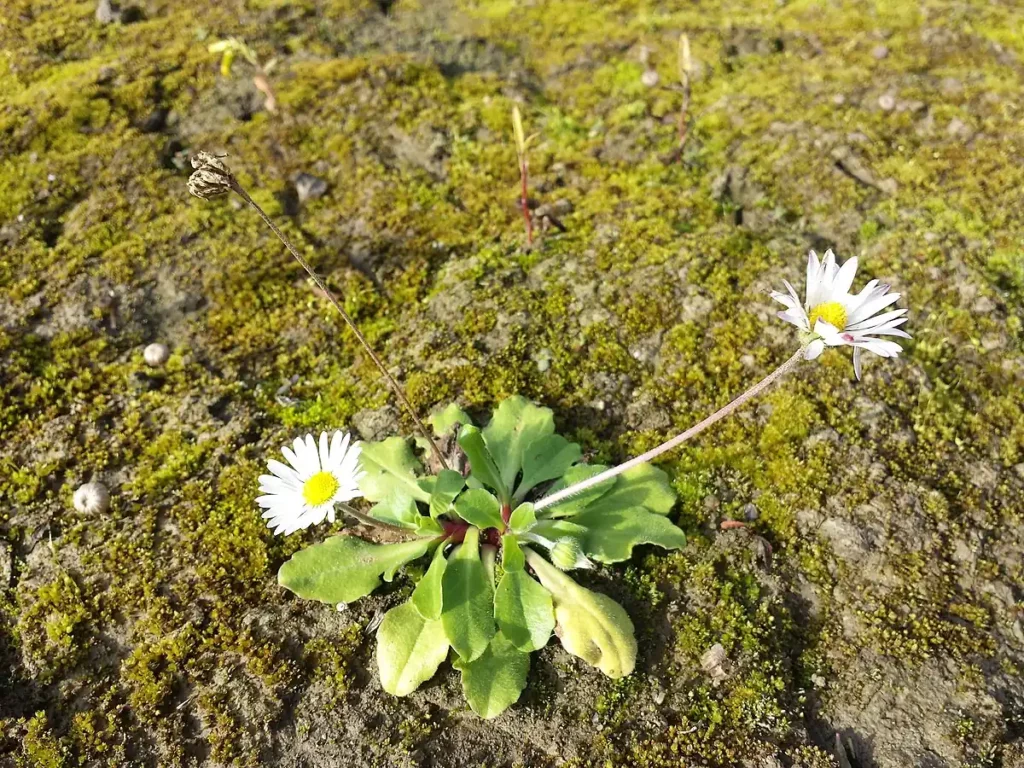
Step-by-Step: How to Identify Flowers Using Leaves
Step 1: Take a clear photo or inspect a fresh leaf
If you’re identifying a plant in real time, pick a healthy, fully grown leaf — ideally one that’s not torn or dried. If you’re using a photo, make sure it clearly shows the entire leaf and how it connects to the stem. This detail helps capture shape, edge, vein pattern, and arrangement.
Step 2: Observe shape, margin, surface, and arrangement
Carefully look at four key traits:
- Shape: Is the leaf oval, lance-shaped, heart-shaped, or compound?
- Margin: Is the edge smooth, toothed, lobed, or serrated?
- Surface: Is it glossy, hairy, fuzzy, or dull?
- Arrangement: Are the leaves opposite, alternate, whorled, or in a basal rosette?
These traits are the foundation of accurate flower identification by leaves.
Step 3: Compare to visual references or use a plant ID app like Planteyes
Once you’ve noted the traits, check against a plant guide, a visual chart, or an app designed for plant identification. Apps like Planteyes allow you to upload a leaf photo and quickly match it with known species, which is beneficial if you’re dealing with an extensive database of flowers.
Step 4: Cross-check traits like stem type, habitat, and season
To avoid confusion between lookalike plants, go one step further. Ask yourself: Is the stem woody or soft? Where did you find it (woodland, garden bed, roadside)? What time of year is it? These extra clues help refine results when learning how to identify flowers using leaves.
Pro Tips for Better Leaf-Based Identification
1. Leaf shape may vary between young vs. mature plants or between shade vs. sun
2. Use at least 3 traits together: shape, margin, and vein pattern
3. Never confirm edibility or toxicity based on leaves alone
4. Avoid wilted or insect-damaged leaves. They can distort key features
5. Note where the plant is growing. Habitat often narrows down options
6. Observe leaf texture (fuzzy, waxy, glossy) for added clues
7. Look at how the leaf connects to the stem. The petiole length and angle matter
Conclusion
Hope this detailed guide will help you spot key leaf traits and apply them confidently in flower identification by leaves. It’s a useful method for any season, especially when flowers aren’t in bloom. For quick, accurate results, give the Planteyes app a try.
FAQs
Can you identify a flower just from its leaves?
Yes, in many cases you can. While flowers provide more specific clues, leaf traits like shape, edge, and arrangement are often enough to identify the plant, especially when paired with habitat and stem details.
What’s more important: shape, margin, or veins?
All three matter, but shape and margin are usually easiest to spot at first glance. Vein patterns become more helpful when distinguishing between lookalike species or identifying monocots vs. dicots.
Do leaf traits change with the seasons?
Some traits remain stable year-round, such as vein structure and margin type. However, color, size, and texture can shift with weather, plant age, or stress, so it’s best to examine mature, healthy leaves when possible.
Are plant ID apps accurate enough?
They’re helpful but not perfect. Apps like Planteyes can quickly narrow down options, but always double-check with a regional guide or reliable reference to confirm your match.


